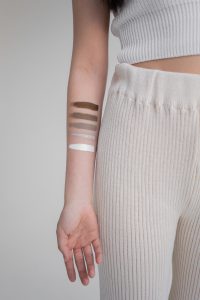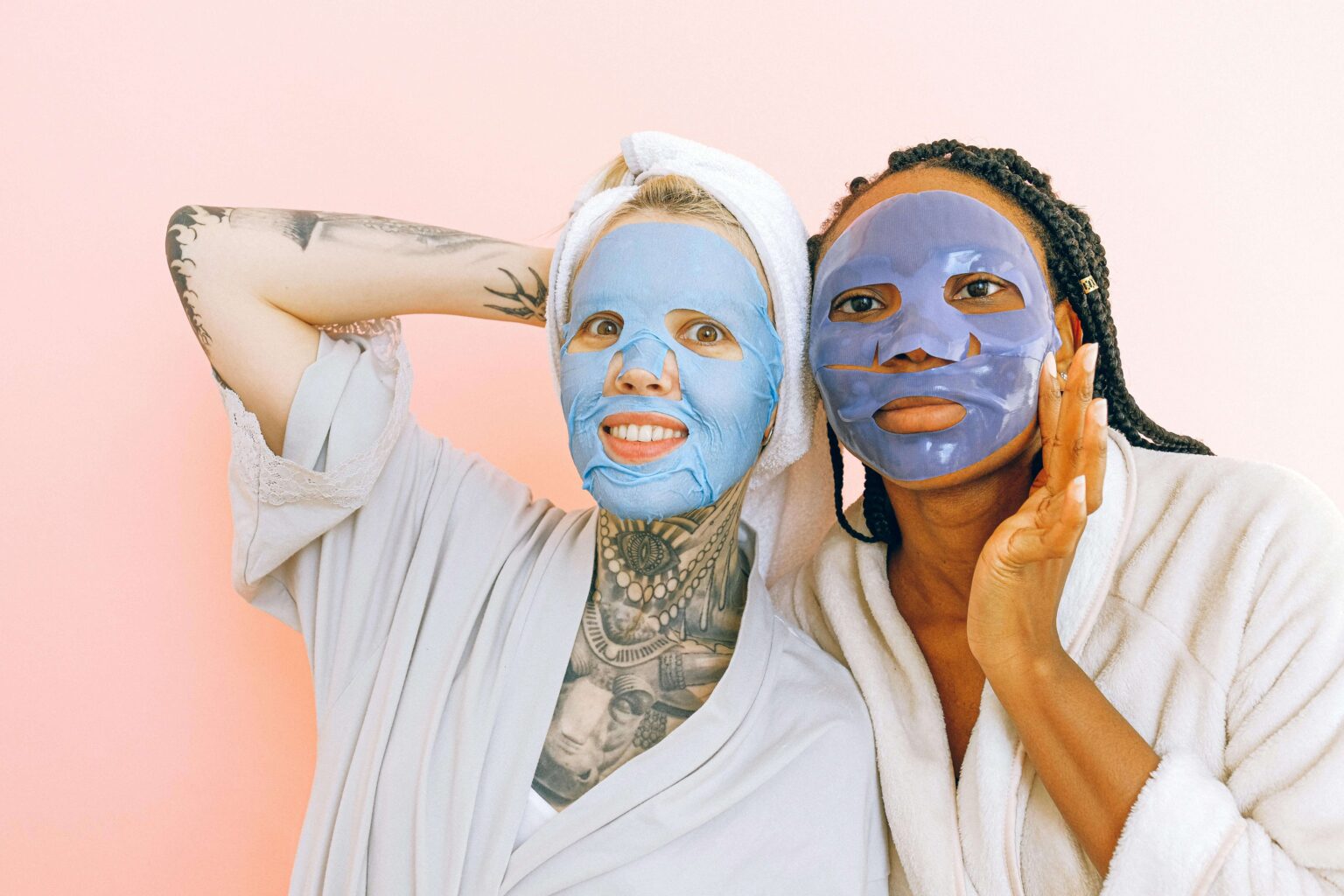What To Do And Not To Do – Neutral Skin Tones

If you have a neutral skin tone, congratulations! You have the most versatile skin tone when it comes to choosing colors. However, this freedom can also come with a bit of anxiety over which colors to pick and how to find the perfect foundation shade. But don’t worry, we’re here to help.
The authorities at 100% PURE adore all skin tones and are aware that those with neutral skin have different necessities. Also, people who don’t have a specific skin tone can follow some easy tips to ensure their skin looks healthy and vibrant.
This tutorial will show you how to determine your skin type so that you can find the perfect products to make your skin glow.
How Do I Know What My Skin Tone Is?
Your skin tone is a combination of your skin’s undertone and overtone. And, your skin tone is the actual color of your skin, uninfluenced by sun exposure or any irritation. Skin tone varies based on different factors such as ethnicity, the amount of melanin in your skin naturally, and even the hemoglobin present in your blood.
The aging process thins your skin, which makes the veins below more visible. This causes your undertone to change – and, in turn, affects what colors look best on you.
There are 110 different skin tone shades that have been identified and labeled worldwide, according to color experts.
The Difference Between Skin Tone and Undertone
The color of your skin’s lower layers, or the hue emitted by your veins near the surface of your skin, is called an undertone.
Undertones are often related to cool, neutral, or warm colors. This helps you see how undertones can describe the temperature of your skin. Sometimes people refer to undertones as seasons; for instance, those with cool undertones might be called winter and those with warm undertones could be referred to as summer.
Trying to find your undertone can be difficult, but there are three straightforward methods to do so.
#1 Determine what kind of jewelry looks best against your skin. If you’re more drawn to beautiful silver pendants, you’re probably a cool undertone. If gold is your go-to metal, your undertone is likely warm. If you feel good in both metals, chances are you have a neutral tone.
#2 Look at your wrist, specifically on the inside. The skin here is thinner than in other areas, making it easier to see your undertone. If you have bluish-pink or purple hues, then you likely have a cool undertone. Those with peach or golden undertones typically mean warm undertones. And if this all seems confusing or difficult to determine, the likelihood is that you’re neutral.
#3 If you find that your skin rarely tans and burns easily, it’s likely that you have cool undertones. On the other hand, those with warm undertones tan more easily but still burn occasionally. And finally, people with neutral undertones fall somewhere in the middle—they can tan if they’re not in the sun for too long, but will still burn if they overexpose themselves.
Although many people with neutral skin tones also have complimentary neutral undertones, it is possible to have a neutral skin tone with either a cool or warm undertone.
Overtone VS Skin Tone
The overtone of your skin is the most superficial layer and what you see when looking at someone’s complexion. This is the layer that tans, burns, gets rashes, or blemishes. Many things can affect a person’s skin tone, which usually falls somewhere on the spectrum from translucent to deep mahogany.
Your skin’s overtone is the surrounding color that reflects from your skin. This can change with the seasons, or if you have developed an irritation such as redness or a rash. Your undertone, on the other hand, is what shows through after your natural flush has faded away, and your vascularity becomes more apparent. Together, they create your skin tone, which is important to note when identifying the right products for you.
Main Characteristics Of Neutral Skin Tones
A common complaint we hear from people with neutral skin tones is that they can’t figure out their undertone/skin tone/overtone. If you feel like you’re unable to figure out if you have a cool or warm complexion, it’s likely because you’re neutral.
Your skin’s undertone can be neutral, but more often it will have warm or cool hues. For example, people with slightly olive or golden undertones are considered to have a warm neutral complexion. If your skin has peachy or flesh tones as its base color-you would be classified as having a cool undertone instead.
There are typically five colors that are considered to be neutral overtones: peach, brown, amber, golden, or olive. However, it is worth noting that overtones can change. If you have a neutral skin tone, this means your skin falls somewhere in the middle of the skin tone shade chart. It is not as common for someone with very fair skin or very dark skin to have true neutral tones. More often than not, those with neutral tones will tend towards being beige, buff-colored, or “medium” toned.
After you find your skin tone, enhance your beauty with a myriad of colors. Here’s how to do it professionally.
What Not To Do With Neutral Skin Tones
Just like any other skin tone, there are a few make-up blunders you can learn to avoid.
1. DON’T Get Sick And Tired
Don’t limit yourself to colors just because you have a neutral skin tone. Be bold and experiment with new shades, like flamingo pink or a daring red lip. If you prefer neutrals, try copper or honey instead of the standard beige and brown. Use your skin undertone as a guide when choosing the perfect shadows and lip colors.
Give this product a try: 100% PURE Fruit Pigmented® Pomegranate Oil Anti-Aging Lipstick Hibiscus. This crimson hue flatters those with neutral skin tones and accentuates flawless skin well. To achieve the desired look, use 100% PURE Fruit Pigmented® Healthy foundation and concealer along with the lipstick.
2. DON’T Use Too Much Foundation
It can be difficult not to over-correct your skin tone, especially if you have skin that is blemish-prone or just uneven. However, using full-coverage foundations can look cakey and unnatural. Try using a sheer, buildable foundation only in areas that really need correction instead, for a more natural finish.
A luminizer makes your skin look healthier by adding a natural-looking glow, without layering on makeup.
3. DON’T Use A Lot Of Bronzer
Most of us want tan skin as summertime approaches, despite knowing the risks associated with too much sun exposure. The next best thing is bronzing powder, although it’s easy to go overboard and make your skin look orange if you’re not careful.
For a more natural look, cream-based bronzers that offer a translucent sweep of color are ideal. 100% PURE Cocoa Pigmented Bronzer is one to try; it’s made with vitamin-rich fruit and cocoa pigments, laced with luminescent gems and minerals for a subtle shimmer and a sun-kissed glow.
What To Do With Neutral Skin Tones
Having a neutral skin tone is one of the most fortunate things that could happen to you in terms of hair and makeup. You can go with any color palette, as your options are virtually limitless. With that being said, here are three ways you can play up your beautiful neutral skin, so it looks even more radiant than usual.
1. DO Try Colors
If you have a neutral skin tone, it can be easy to only stick to wearing taupe and cream eyeshadows. However, don’t be afraid to experiment with other colors outside the typical neutrals. In fact, those with neutral skin tones can usually pull off any color well. This includes creating an eye look that really pops, or making your lips more noticeable than usual.
According to many, shades like plum, violet, pink, and red can go well with any skin tone. If you’re looking for a new product to try, 100% PURE Fruit Pigmented® Eye Shadow in Petal Tip is a beautiful sun-ripened shade of plum that has just a hint of violet. Not only is it neutral enough to complement any skin tone, but the added color will make your eyes stand out no matter what their natural hue may be.
In conclusion, use color cosmetics to add life and vibrancy to your skin. People with neutral skin tones can avoid looking washed out by using the right colors that highlight their natural complexion.
2. DO Use Your Undertone to Select Foundation
Always buy foundation according to your skin’s undertone. Your overtone can lighten or darken (if you get a tan or if you have any sort of irritation).
Foundation can help improve your skin tone by color correcting it. If you have a natural undertone, use a foundation that doesn’t contain an evident pink or golden hue. You should instead be looking for something closer to a true flesh tone color.
One foundation you should try is the 100% PURE Fruit Pigmented® 2nd Skin Foundation in Shade 2. This shade is a perfect match for those with neutral undertones, and it goes on light, making your skin look natural.
3. DO Glow
If you want your skin to glow, use a product that creates radiance. A pearlescent mixing balm can be added to any makeup product (from foundation to lipstick) for extra shine without looking glittery.
One product you should try is 100% PURE Luminating Creme. You can use it by itself or with other products like foundations, concealers, and powders. Just mix it with your foundation to get skin that looks healthy, hydrated, and dewy.
Embrace Your Neutral Skin Tone!
People with skin tones that are considered to be neutral have it easy when deciding what colors to wear, since they can wear any color. If you want your skin to look healthier, use foundation sparingly and instead focus on using luminizing products and colors that will make your skin pop.




